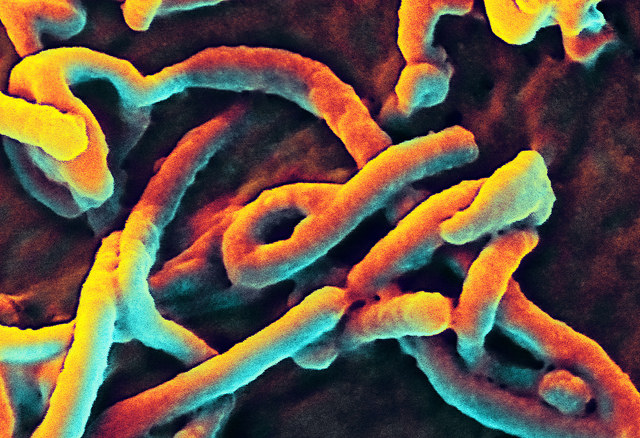Covering the Next Pandemic: Tips for Journalists Reporting on Disease Outbreaks

The Ebola virus. Image: flickr/NIAID
SAN FRANCISCO—When the next big disease outbreak comes around, science journalists will have a key role to play in keeping the public informed. Two public health experts and a global health journalist reflected on that role during a panel called “The Challenges of Covering Infectious Disease Outbreaks,” held on 27 October at the World Conference of Science Journalists 2017.
The risk of a yellow fever pandemic is the highest it’s been in 70 years.
Pandemics aren’t cyclical, so we can’t predict when the next one will strike. But researchers have pinpointed factors that affect how infectious diseases spread. Today, the risk of a yellow fever pandemic is the highest it’s been in 70 years, said Duane J. Gubler, an emeritus professor at Duke-NUS Medical School in Singapore studying insect-borne diseases and dengue fever. Gubler attributes this level to increasing population growth in developing countries, especially in large cities.
Urban growth has created the ideal conditions for zoonotic diseases to jump species from animal to human, Gubler said. Combine that with modern transportation—where airplanes can transport animals and people around the world in hours—and you’ve got the potential for a local disease to become a worldwide pandemic.
The role of media
Health officials haven’t always acknowledged the media’s role during a pandemic. Until the SARS epidemic of 2003, “communication was not really seen as a tool of public health,” said Dick Thompson, former team leader for pandemic and outbreak communication at the World Health Organization.
But as SARS spread, Thompson realized that a partnership between the WHO and the media was essential to ending the outbreak. Media reports put the public on alert and helped medical workers recognize SARS symptoms. The outbreak, which killed more than 8,000 people over eight months, fundamentally changed the way the WHO now interacts with the press, he said.
Since then, Thompson has continued to advocate for open communication between public health officials and journalists. Trust is the key factor in all relationships between health officials, the media and the public, he said, but “trust is a two-way street.” As a WHO official, he was especially responsive to reporters whom he knew did good work, he said.
Thompson recommended that journalists take definitive statements from governments and health authorities (such as “we have it under control”) with a grain of salt, especially when an outbreak starts. Reporters do need to keep in mind, however, that there will always be uncertainties, since outbreaks move quickly and often unpredictably.
Thompson also underscored that reporters must stay safe, especially when out in the field. That means preparing carefully before entering active infection zones.
For Helen Branswell, now a senior writer in global health for the Boston-based biomedical news outlet STAT, the 2003 SARS outbreak hooked her on the beat. The following year, she became obsessed with reporting on another virus with pandemic potential: the H5N1 influenza virus. Both experiences showed her the power of what she calls the “fear factor.”
“When you realize the people you are talking to are really afraid, it influences the way you think about the story you’re covering,” she said. That’s a good indication whether an outbreak is worth writing about—and whether worrying the public is warranted.
“There is no such thing as ‘due’ or ‘overdue’ with infectious disease outbreaks.”
Branswell said it’s important to think about the “fear factor” because reporters often fall into a trap of overstating the potential catastrophe of an outbreak. In her current reporting, she said, “I’m trying to take a more measured view” of the danger a disease actually poses.
Finally, Branswell urged journalists to not say that the world was “due” for another global pandemic. “There is no such thing as ‘due’ or ‘overdue’ with infectious disease outbreaks,” she said. “They happen when they happen.”
—
Leah Rosenbaum is a dual-degree master’s student at the University of California, Berkeley, in the School of Journalism and the School of Public Health, department of infectious disease and vaccinology. She enjoys feature writing and data visualization, as well as statistics-based stories. Follow her on Twitter @leah_rosenbaum



